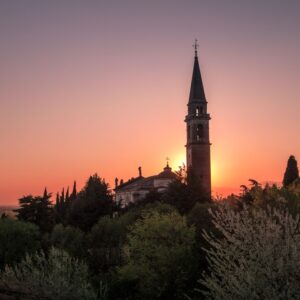The Runespoor is a mythical creature from the Harry Potter universe, created by author J.K. Rowling. It is described as a three-headed serpent native to the African continent.
In the fictional wizarding world, each head of the Runespoor is believed to have a distinct function: the left head is said to be the planner, the middle head is the dreamer, and the right head is the critic. According to the lore, Runespoors typically grow to be six to seven feet long. Their eggs are highly valued in potion-making, particularly for enhancing mental agility.
The creature is classified as XXXX (dangerous) by the fictional Ministry of Magic, indicating that it requires specialist knowledge to handle. In the Harry Potter series, Runespoors are associated with Dark wizards, who are said to favor them as pets. However, this association is likely due to the creature’s intimidating appearance rather than any inherent malevolence.
The Runespoor’s unique three-headed structure and its supposed ability for complex thought have made it a subject of interest in magical creature studies within the fictional world. It’s important to note that the Runespoor is entirely fictional and does not exist in the real world. Its characteristics and properties are part of the rich fantasy world created for the Harry Potter series.
Key Takeaways
- The Runespoor is a magical creature from the wizarding world, known for its three heads and powerful magical properties.
- The Runespoor has a long, thin body with three heads, each with its own unique personality and abilities.
- Runespoors are known to be reclusive creatures, preferring to live in dark, damp environments such as swamps and dense forests.
- The Runespoor is highly sought after for its magical properties, including its venom and the ability to predict the future.
- In wizarding culture, the Runespoor is often associated with dark magic and is the subject of many legends and myths.
Physical Characteristics of the Runespoor
Physical Characteristics
This serpent-like creature has three heads, each growing from the same body, with the smallest head being the youngest and the largest head being the oldest. Each head has its own distinct personality and abilities, making the Runespoor a multifaceted creature. Its scales are a deep shade of black, with iridescent markings that shimmer in the light, and its eyes are a piercing yellow color. Its long, slender body allows it to move with grace and agility.
Behavior and Abilities
The heads of the Runespoor are known to bicker and argue with each other, often making it difficult for the creature to make decisions or take action. Despite this, the Runespoor is not inherently aggressive and will only attack if provoked or threatened. One of its most notable abilities is its venomous bite, which can be deadly if not treated promptly.
Observation and Study
The Runespoor’s unique physical characteristics make it a captivating creature to observe and study. Its complex nature and intriguing abilities have sparked the interest of many, and it continues to be a subject of fascination for those who are lucky enough to encounter it.
Behavior and Habitat of the Runespoor

The Runespoor is a solitary creature that prefers to live in dense, tropical forests where it can remain hidden from humans and other magical creatures. It is a nocturnal creature, often hunting under the cover of darkness and using its keen sense of smell to track prey. The Runespoor is an opportunistic hunter, feeding on small mammals, birds, and reptiles.
It is also known to consume certain magical plants and fungi that have potent magical properties. The three heads of the Runespoor have distinct personalities and abilities, which can make it a challenging creature to understand and predict. The smallest head is known for its curiosity and playfulness, often getting the Runespoor into trouble with its impulsive behavior.
The middle head is the most cunning and calculating, using its intelligence to outwit prey and potential threats. The largest head is the most aggressive and dominant, often taking charge in confrontational situations. The Runespoor is a highly territorial creature, marking its territory with a musky scent that warns other creatures to stay away.
It is also known for its ability to communicate with each of its heads independently, allowing it to strategize and coordinate its actions effectively. The complex behavior and habitat of the Runespoor make it a captivating subject for magical researchers and conservationists.
Magical Properties and Uses of the Runespoor
| Aspect | Information |
|---|---|
| Length | Can grow up to six to seven feet long |
| Number of heads | Three |
| Habitat | Native to Burkina Faso, where it inhabits dense jungles and swamps |
| Magical uses | Its fangs are highly prized as potion ingredients |
| Behavior | Extremely aggressive and will attack anything that comes near it |
The Runespoor is revered in certain magical communities for its potent magical properties and uses. Its venom is highly sought after for use in potions and spells, as it has powerful transformative properties when properly diluted and prepared. The venom of the Runespoor is known to be particularly effective in potion-making, especially in potions that require a delicate balance of ingredients.
In addition to its venom, the scales of the Runespoor are also prized for their magical properties. When ground into a fine powder, the scales can be used in protective spells and charms, as they are believed to ward off dark magic and malevolent spirits. The scales are also used in certain forms of divination, as they are said to enhance one’s ability to see into the future.
The Runespoor’s ability to communicate with each of its heads independently has also made it a valuable ally in certain forms of magical research and experimentation. Its insight and wisdom are highly regarded by certain magical scholars, who seek out the Runespoor for guidance and advice on complex magical matters. The magical properties and uses of the Runespoor have made it a highly sought-after creature in certain magical circles.
Cultural Significance and Legends Surrounding the Runespoor
The Runespoor has been the subject of many myths and legends throughout history, often being associated with dark magic and malevolent forces. In certain African cultures, the Runespoor is seen as a symbol of wisdom and cunning, revered for its ability to outsmart predators and protect its territory. It is often depicted in ancient tapestries and carvings as a guardian spirit that watches over sacred places.
In European folklore, the Runespoor is often portrayed as a sinister creature that brings misfortune and chaos wherever it goes. It is said to be a servant of dark wizards and witches, using its venomous bite to carry out their nefarious deeds. Despite these negative associations, some magical communities believe that the Runespoor holds the key to unlocking ancient mysteries and secrets that have been lost to time.
Legends surrounding the Runespoor often speak of its ability to grant wishes or bestow great knowledge upon those who seek it out. However, these legends also warn of the dangers of underestimating the cunning nature of the Runespoor, as it is known to trick and deceive those who are not careful in their interactions with it. The cultural significance and legends surrounding the Runespoor have made it a captivating figure in magical folklore.
Conservation Efforts and Threats to the Runespoor

Habitat Loss and Fragmentation
The dense tropical forests that the Runespoor calls home are being rapidly destroyed by human development, leaving the creature with limited places to hide and hunt for food. This loss of habitat has led to a decline in the Runespoor population, making it increasingly difficult for researchers and conservationists to study and protect the creature.
Poaching and Illegal Hunting
In addition to habitat loss, the Runespoor faces threats from poachers who seek out its venom and scales for use in dark magic rituals and potions. The demand for these rare magical ingredients has led to an increase in illegal hunting of the Runespoor, further endangering its population. Conservation efforts are underway to protect the remaining habitats of the Runespoor and crack down on poaching activities, but more needs to be done to ensure the survival of this unique creature.
Conservation Efforts and Future Generations
Magical researchers and conservationists are working together to study the behavior and habitat of the Runespoor in order to develop effective conservation strategies. Efforts are being made to create protected areas where the Runespoor can thrive without fear of human interference or poaching activities. These efforts are crucial in ensuring that future generations will have the opportunity to learn from and appreciate this enigmatic creature.
How to Safely Interact with the Runespoor
Interacting with a Runespoor can be a risky endeavor due to its venomous bite and complex behavior. However, there are certain precautions that can be taken to safely observe and study this fascinating creature. It is important to approach a Runespoor with caution and respect for its territorial nature.
Keeping a safe distance from the creature’s habitat will help minimize any potential conflicts or confrontations. When observing a Runespoor in the wild, it is important to remain quiet and unobtrusive in order to avoid startling or agitating the creature. This will allow researchers and observers to witness natural behaviors without causing undue stress to the Runespoor.
It is also important to avoid making sudden movements or loud noises that could provoke a defensive response from the creature. If one must handle or interact with a captive Runespoor, it is crucial to do so under the supervision of experienced magical handlers who understand the behavior and needs of the creature. Proper safety precautions should be taken when handling a Runespoor, including wearing protective gear such as gloves and goggles to prevent accidental exposure to its venom.
In conclusion, the Runespoor is a captivating and enigmatic creature that holds great significance in magical folklore and research. Its unique physical characteristics, behavior, magical properties, cultural significance, conservation efforts, and potential threats make it an important subject for further study and protection. By understanding how to safely interact with the Runespoor and supporting conservation efforts, we can ensure that this remarkable creature will continue to thrive in its natural habitat for generations to come.
If you’re interested in learning more about magical creatures, you should check out this article on foryourharmony.com about the mysterious and dangerous runespoor. This three-headed serpent is known for its deadly venom and cunning nature, making it a fascinating subject for anyone interested in the magical world.
FAQs
What is a runespoor?
A runespoor is a magical creature from the world of Harry Potter, described as a three-headed serpent with each head serving a different purpose.
Where can runespoors be found?
Runespoors are native to Burkina Faso in Africa, but they have been known to be found in other parts of the world as well.
What are the characteristics of a runespoor?
Each head of a runespoor serves a different purpose – the left head is the planner, the middle head is the dreamer, and the right head is the critic. They are known for being highly intelligent and skilled in magical arts.
Are runespoors dangerous?
Runespoors are considered dangerous creatures, as they are capable of delivering a lethal bite. They are also highly venomous and are classified as XXXX in the Ministry of Magic’s classification of magical creatures.
What is the significance of runespoors in the wizarding world?
Runespoor eggs are highly prized in the wizarding world, as they are used in potion-making. The three-headed serpent is also a popular subject in the study of Care of Magical Creatures.





